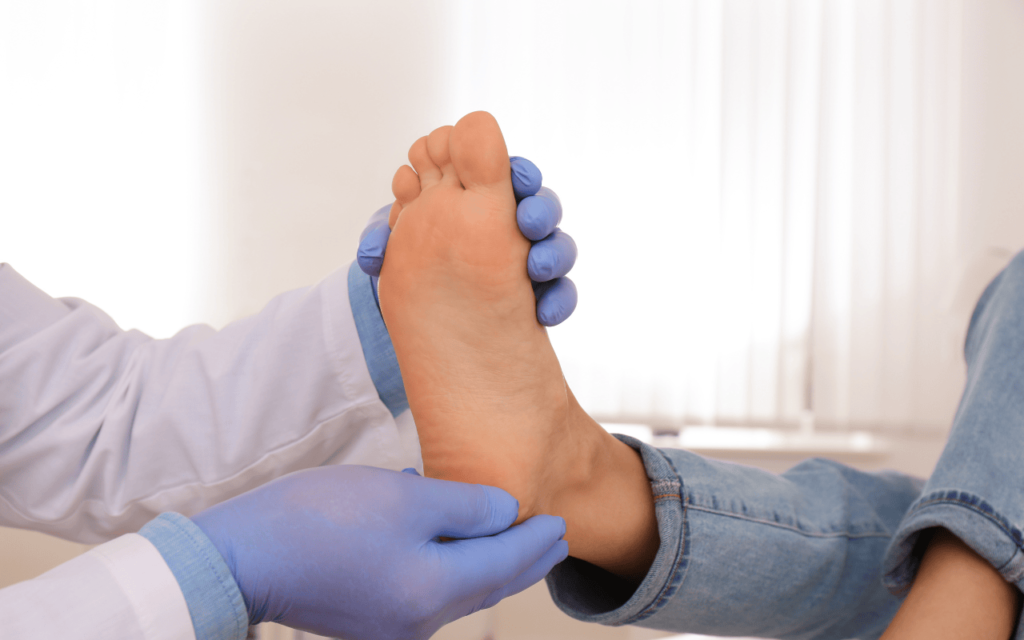At Texas Foot and Ankle Consultants, we are dedicated to providing comprehensive care for a wide range of foot and ankle conditions, including high-arched feet. Also known as cavus feet, this condition is characterized by an abnormally high arch, which can lead to various foot-related issues. In this blog post, we will explore what high-arched feet are, their potential causes, common symptoms to watch out for, and the treatment options available to address this condition and improve your foot health.
What are High Arched Feet?
Defining the Condition
High-arched feet refer to a foot structure in which the arch of the foot is significantly raised, making it more pronounced than in a typical foot. Unlike flat feet, where the arch is very low or almost non-existent, high arched feet have an exaggerated arch that may not make full contact with the ground during standing or walking.
Understanding the Origins
The exact cause of high-arched feet can vary, and in some cases, it may be hereditary. However, other factors that can contribute to or lead to the development of cavus feet include:
Neurological Conditions
High-arched feet may be associated with certain neurological conditions such as Charcot-Marie-Tooth disease, spina bifida, or cerebral palsy. These conditions can affect nerve function and muscle control in the feet, leading to an abnormal foot arch.
Muscular Imbalances
Weaker muscles in the feet may not adequately support the arch, causing it to rise excessively.
Injuries or Trauma: Foot injuries or trauma can alter the foot’s biomechanics, resulting in a higher arch.
Underlying Medical Conditions: Certain medical conditions, such as polio or stroke, can contribute to the development of cavus feet.
Identifying the Signs
High-arched feet can cause various symptoms, including:
Arch Pain: Discomfort or pain in the arch area of the foot, particularly during prolonged standing or walking.
Instability: Due to the reduced surface area in contact with the ground, individuals with cavus feet may experience decreased stability, making them more susceptible to ankle sprains or other injuries.
Calluses: The elevated arch can lead to excessive pressure on specific areas of the foot, resulting in the formation of calluses.
Claw Toes: The toes may curl downward and become claw-like due to the muscle imbalances associated with high-arched feet.
Difficulty Finding Proper Footwear: People with cavus feet may struggle to find shoes that fit comfortably due to the unique shape of their feet.
Treatment Options for High-Arched Feet
Addressing the Issue
The treatment for high-arched feet aims to reduce pain, improve foot function, and prevent potential complications. Depending on the severity of the condition and the underlying cause, treatment options may include:
Custom Orthotics: Specialized shoe inserts or orthotics can provide additional support and cushioning to help distribute pressure more evenly across the foot.
Physical Therapy: Targeted exercises can strengthen the muscles in the feet and ankles, improving stability and flexibility.
Bracing: In some cases, ankle-foot orthoses (AFOs) or braces may be recommended to provide external support and improve foot alignment.
Footwear Modifications: Wearing shoes with good arch support and a wide toe box can help accommodate high-arched feet and reduce discomfort.
Surgical Intervention: In severe cases or when other treatments are ineffective, surgery may be considered to correct the foot’s structure and address any associated issues.
Conclusion:
High-arched feet can cause significant discomfort and impact daily activities. If you suspect you have cavus feet or are experiencing any foot-related problems, we encourage you to schedule a consultation with our experienced podiatrists at Texas Foot and Ankle Consultants. Proper diagnosis and personalized treatment can help manage the condition effectively and improve your overall foot health, allowing you to stay active and pain-free. Remember, early intervention is essential for the best outcomes.


